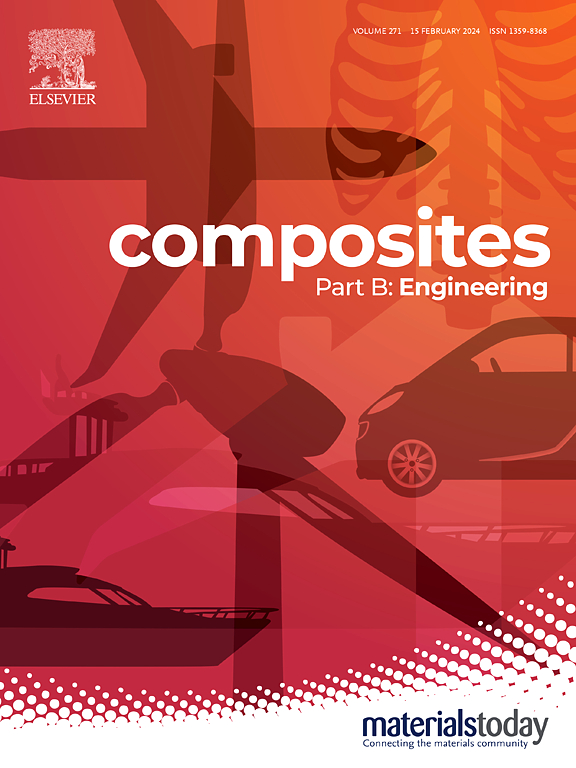Investigation of the stacking sequence and cutting parameters effect on hole morphology in hybrid FML composites
IF 12.7
1区 材料科学
Q1 ENGINEERING, MULTIDISCIPLINARY
引用次数: 0
Abstract
Fiber metal laminates (FMLs) are widely used in a wide range of engineering applications, especially in the aerospace industry, due to their superior functional properties and low cost. In this experimental study, hybrid FML composite specimens consisting of five different Al2024/FRP/Al2024 stacked glass and carbon fiber layers were fabricated to investigate the effect of stacking sequences and cutting parameters on the drilling process. The drilling machinability properties of the specimens were investigated by considering the cutting force, torque, surface roughness and damage analyses in the hole after drilling and the results are presented comparatively. As a result of the experimental study, it was determined that the stacking sequences have a significant effect on the machinability. In terms of cutting forces, it was observed that the cutting force increased in carbon stacked areas and the cutting forces tended to decrease in glass stacks. In torque values, there is an increase in glass stacks and a decrease in carbon stacks. The highest roughness values were measured from all-glass stacked specimens. In hybrid composites, it was observed that glass stacks generally increased the surface roughness.
堆砌顺序和切削参数对杂化FML复合材料孔洞形貌影响的研究
金属纤维层压板(FMLs)由于其优越的功能性能和低廉的成本,在广泛的工程应用,特别是在航空航天工业中得到了广泛的应用。通过制备5种不同Al2024/FRP/Al2024堆叠玻璃层和碳纤维层的FML复合材料,研究堆叠顺序和切削参数对钻进过程的影响。综合考虑切削力、扭矩、表面粗糙度和钻孔后孔内损伤分析,研究了试样的钻孔可加工性,并对结果进行了对比分析。通过实验研究,确定了堆垛顺序对可加工性有显著影响。在切割力方面,观察到碳堆区域的切割力增加,玻璃堆区域的切割力有减小的趋势。在扭矩值上,玻璃堆增加,碳堆减少。在全玻璃堆积的样品中测量到最高的粗糙度值。在杂化复合材料中,观察到玻璃堆通常会增加表面粗糙度。
本文章由计算机程序翻译,如有差异,请以英文原文为准。
求助全文
约1分钟内获得全文
求助全文
来源期刊

Composites Part B: Engineering
工程技术-材料科学:复合
CiteScore
24.40
自引率
11.50%
发文量
784
审稿时长
21 days
期刊介绍:
Composites Part B: Engineering is a journal that publishes impactful research of high quality on composite materials. This research is supported by fundamental mechanics and materials science and engineering approaches. The targeted research can cover a wide range of length scales, ranging from nano to micro and meso, and even to the full product and structure level. The journal specifically focuses on engineering applications that involve high performance composites. These applications can range from low volume and high cost to high volume and low cost composite development.
The main goal of the journal is to provide a platform for the prompt publication of original and high quality research. The emphasis is on design, development, modeling, validation, and manufacturing of engineering details and concepts. The journal welcomes both basic research papers and proposals for review articles. Authors are encouraged to address challenges across various application areas. These areas include, but are not limited to, aerospace, automotive, and other surface transportation. The journal also covers energy-related applications, with a focus on renewable energy. Other application areas include infrastructure, off-shore and maritime projects, health care technology, and recreational products.
 求助内容:
求助内容: 应助结果提醒方式:
应助结果提醒方式:


